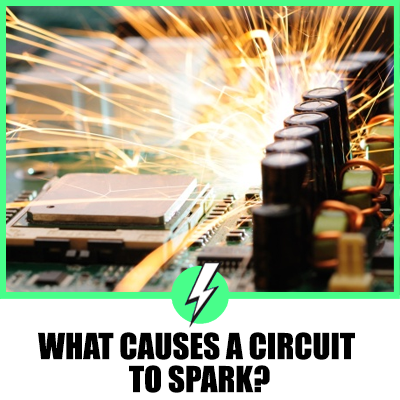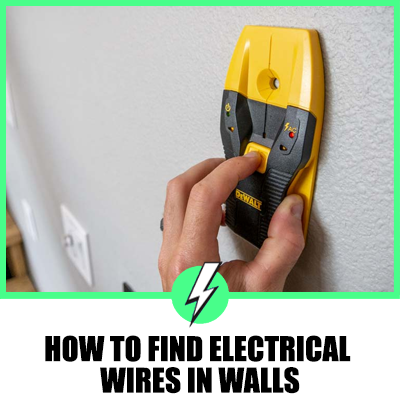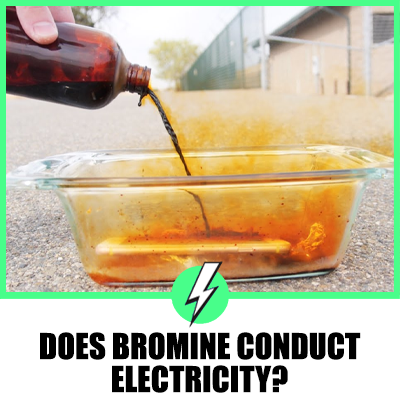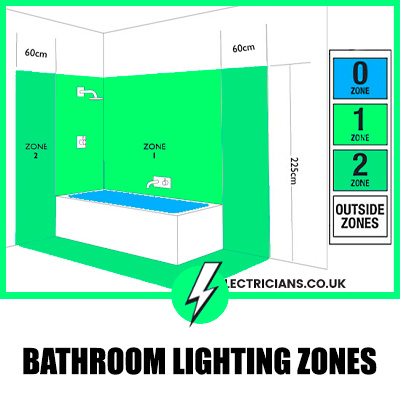What causes a circuit to spark?
You may see a spark when you plug into a wall socket. There is enough space between the terminal conducting electricity and the pin on the plug; the electricity tries to jump this small gap causing a spark.
It used to be common to see RCD breakers spark as you switch on or off. Again it’s just the monetary time when there is a slight gap between the breaker switch and the busbar.

Contents
Should I worry if my outlet sparks?
If the spark is minimal and blue, then it’s likely not to be a problem, but 3 pin sockets rarely spark, so there could be a more serious concern, and you may have loose wires in your plug.
Open the plug and check the wires are firmly screwed into their terminals. If all is ok, then it’s just an odd incident.
When you visit overseas countries using 2 pin plugs, you will see more sparks flying than in the UK, but it doesn’t mean there is a fault unless you find the plug or socket getting hot and starting to smoke. If this does happen, switch off the power from the breaker and call the spark/electrician.
Do extension sockets cause sparks?
Yes, overloading an extension adaptor can be dangerous, and you may see sparks flying. If you smell burning plastic and have sparks from your extension adaptor, you have a problem.
You can check the ratings in watts of the extension adapter and the appliances to not create an overload situation that could cause a fire.
Here is a comprehensive list of common household items with their amps and wattage requirements:
| Appliance | Amps Used | Watts Used | Additional information |
|---|---|---|---|
| Laptop | <0.5 | Up to 100 | |
| Mobile phone charger | <0.5 | Up to 75 | Since the introduction of USB 3 these devices are now typically 20W but can be as high as 75W for multiple fast charging |
| Chargers for battery-operated devices | <0.5 | Up to 75 | Wide range of devices ranging from 7W for simple USB powered chargers to 75W for multiple charging devices |
| Battery chargers for tools | 1.5 | Up to 350 | Typically, 50-350W the faster the charger the higher the power |
| Electric blanket | Up to 1.3 | Up to 300 | Typically, 90-300W. Double controller types are generally higher powered |
| Fridge (under counter type) | 0.75 | 100 | |
| Freezer | 0.75 | 100 | Applies to upright and domestic chest type freezers generally the larger the freezer the higher the power |
| Mini Fridge | 0.5 | 100 | |
| Fridge Freezer (Standard) | 1.5 | 150 | |
| American Style Fridge Freezer | 2.5 | 250 | |
| Kettle | Up to 13 | Up to 3000 | Typically, 2200 – 3000W |
| Satellite TV box/ Streaming devices | <0.5 | 30 | |
| Printer | <0.5 | 50 | |
| Radio | <0.5 | 15 | |
| Radiator or Fan Heater | Up to 13 | Up to 3000 | Typically, 2000 – 3000W |
| Desk lamp (with 60 W lamp) | <0.5 | 60 | |
| Desk lamp (with LED lamp) | <0.5 | 5 | |
| DVD/Blu-Ray player | <0.5 | 20 | |
| Hair dryer | 10 | 2200 | |
| Hair straighteners | <0.5 | Up to 100 | Typically, 60 – 100W |
| Landline cordless telephone charger | <0.5 | 10 | |
| Computer monitor | <0.5 | 25 | |
| Desktop computer | 1.3 | Up to 300 | Generally, the higher the specification the more power it needs, gaming computers tend to be highest |
| Television 55” UHD | <0.5 | 120 | |
| Games console | 0.86 | 200 | |
| Washing machine | 10 | 2200 | |
| Toaster (4 Slice) | 9 | 2000 | |
| Toaster (2 Slice) | 4 | 900 | |
| Tumble dryer (condenser or vented) | 11 | 2500 | |
| Tumble dryer (Heat Pump) | 3.5 | 800 | New technology tumble dryers that have much lower consumption figures |
| Dishwasher | 10 | 2200 | |
| Iron | 13 | 3000 | |
| Microwave | 6.5 | 1500 | Standard microwave with no grill or oven function |
| Vacuum cleaner | 9 | 2000 | Pre 2014 |
| Vacuum cleaner | 7 | 1600 | Pre 2017 |
| Vacuum cleaner | 4 | 900 | Post 2017 |
| Cordless vacuum cleaner | 0.75 | Up to 175 | Typically 20-60W cordless vacuums using power tool batteries and chargers are higher |
| Wi-Fi router | <0.5 | 15 | |
| Single oven | 13 | 3000 | |
| Electric Vehicle (Slow Charge) | Up to 13 | Up to 3000 | Not to be used with an extension lead Dedicated circuit required and ideally an EV rated socket-outlet |
| Portable air conditioner | Up to 9.3 | Up to 2000 | Typically, 900 – 2000W the higher the BTUs the higher the power |
| Patio Heater | Up to 13 | Up to 3000 | Typically, 1200-3000W |
| Extension lead | – | – | Does not draw any current by itself. However, has the potential to cause overloads if daisy-chained |
| Alarm clock radio | <0.5 | Up to 6W | Average |
| E-cigarette | <0.5 | Up to 65W | Based on phone charger as mostof these devices are battery-powered and similarly charged viaUSB charger. |
| Slow cooker | <0.5-1.1 | Up to 250W | Typically 75-250W |
| Portable Speaker (Bluetooth/wi-fi) | <0.5 | Up to 65W | Based on phone charger as mostof these devices are battery-powered and similarly charged viaUSB charger. |
| Toothbrush charger | <0.5 | Up to 2.5W | Most modern chargers are <1W.However, some older chargers canbe up to 2.5W. |
How do you stop electrical sparks?
Preventative maintenance should be done, but it rarely happens, and you react to problems.
If you have sparks from a plug or socket, you will need to remove the plug but first isolate the power supply to be safe.
Open your plug and check for loose connections and burn marks. You may need to strip back the wires to make the connections good.
Once the wires are in the correct terminals, (brown live, blue neutral, green and yellow earth), lock the wires into place with the bar that runs across the bottom of the plug.
To maintain your wall sockets, it’s best to use a qualified electrician and allow him to run the required tests ensuring there is nothing more sinister with the circuit.
What to do if a wire is sparking?
Move away from the power line as far as possible. If you can isolate the power supply, that’s great, but if not, call an emergency electrician and let him live up to his nickname.
Cables rarely spark, but if something is seriously wrong, the problem with sparking cables is the copper wires must be exposed, which puts you in danger as electricity can travel across the floor or surface.
What activities can cause an electric spark?
Things that can potentially cause electric sparks:
- Exposed copper cables touching will cause a lot of sparks
- If a neutral wire touches the live wire, it will cause sparks, better known as a short circuit
- Moisture in the atmosphere or in and around the electrical terminations. Electricity can travel through water
- Overloading sockets by using extension cables that are not suitably rated for the amps and watts being used
- If your property needs rewiring, the sockets are old and have become faulty
- Repairs that have not been carried out properly in a DIY situation can cause sparks and be fatal
All of the above are easily avoided with simple maintenance.
Can a sparking light switch cause a fire?
Yes. When terminals work loose overtime in switches, there is a small amount of sparking and resistance building in the switch.
Resistance in a circuit generates heat. The heat can build sufficiently to ignite, which can cause a major fire.
When does a spark become an arc?
Duration of high voltage is the answer. Sparks are intermittent, but when high voltage is present, the duration or time of the high voltage will turn a spark into an arc.
Can you get electrical arcs from 240 volts in your home?
Yes, arc flashes tend to happen when cables have been damaged in the home during DIY repairs and improvements. Cables in walls are covered with a protective sheath.
If you should drill through the sheath or drive a nail or screw through, you can cause arc flashing.
If this happens, you must contact an electrician for immediate support and isolate the electrical system if possible.
How dangerous are arc flashes?
Extremely dangerous. An arc flash can cause third-degree burns and other bodily injuries such as blindness, nerve damage, and cardiac arrest resulting in death.
Are the UK electrical regulations addressing sparks and arcs?
Yes. As technology moves on, more and more protections are being built into RCDs.
It’s not too many years ago that the protection on an electrical circuit was a piece of encapsulated copper wire, called a fuse.
When there was a current overload, the wire would burn and break, switching off the power.
But with the invention of the RCD, things started to change rapidly. A simple bimetallic strip could handle any overload situations and trip the switch rendering the circuit power-free and safe.
However, this did not address the elephant in the room, sparks and arcs!
Today the humble RCBO can be fitted with an electromagnetic coil to deal with short circuits which cause sparks.
Today, you can purchase an RCD with spark protection and an AFDD ( Arc fault protection device) with a small processor that can analyse voltage variations and eliminate arcs.
Is RCD protection bulletproof?
It has always been a great tool and much better than a fuse, but there have been changes in technology in our homes that have negated some of the safety features of the RCD protection.
As circuit boards that control appliances and laptops and tablets have increased, it was recognised that these circuit boards could leak DC voltage back into your AC home circuits.
A DC saturated RCD means the RCD is disabled, so RCD technologies have had to innovate quickly to deal with the problem.
What’s the difference between type A and type AC RCBO/RCD
For many years the industry sparks have chosen to fit the ubiquitous AC RCBO, which has provided excellent protection to circuits and the consumers.
The RCBO was perfect for clean AC power that was not corrupted by DC voltage.
However, with increasingly sophisticated loads on the RCBO coming from circuit boards, the potential for DC saturation increased.
When there is sufficient DC leakage into an AC home circuit, the RCB AC is stunned and can not operate when an earth fault occurs, placing users in danger.
You may feel that you do not have any exotic loads causing DC to leak into your AC system, but these DC loads come from washing machines, gaming centres, and even your TV and satellite box.
The RCBO A can handle up to 6 mA of DC, enabling the RCBO A to function normally under load conditions.





